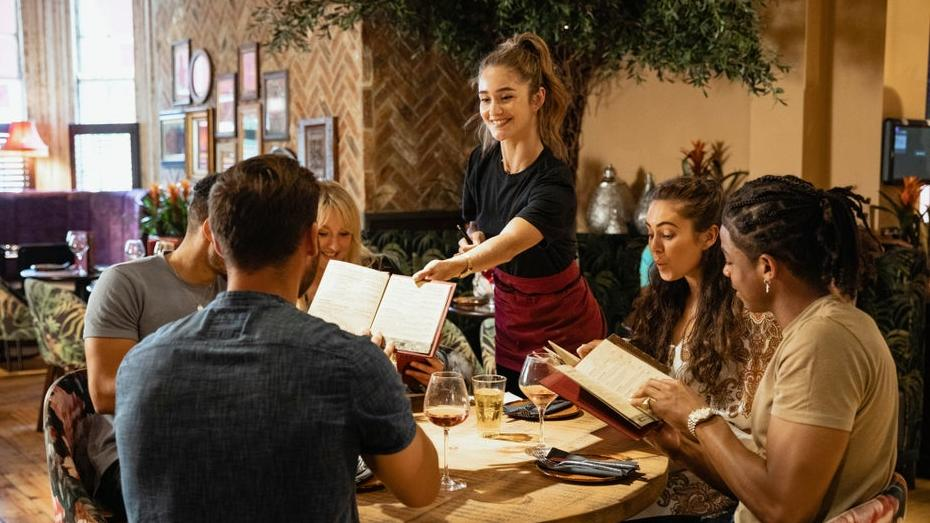More Americans Are Dining Out, At Least In These States
Some states had small increases in restaurant foot traffic, while others had huge ones.
COVID-19 upended society in countless ways, and while the experience of dining out at restaurants has returned to relative normalcy, with few (if any) pandemic restrictions involved, we're still collectively feeling the effects of their temporary 2020 closure. The initial lockdowns forced restaurant owners to rely solely on takeout and delivery, leading to an explosion in the popularity of food delivery apps like Uber Eats and DoorDash.
By April 2022, however, NBC News reported that what went up was starting to come down, with delivery waning as diners returned to the traditional experience of eating out. Now, Wise Voter has released data comparing restaurant foot traffic in December 2020 to that of December 2022. While the upward trends are unsurprising—more people are obviously going to restaurants now—the variation in data state by state is where it gets interesting.
The top 10 states with the lowest increases in restaurant foot traffic are nearly all in the South, where 2020 COVID restrictions tended to be more lax than other parts of the country. Tennessee saw the lowest increase in restaurant dining, at just 18%, yet this doesn't necessarily mean residents displayed significantly less interest in dining out than, say, people in Colorado, where dining room visits increased by 91%. Rather, people in Tennessee likely never really stopped eating out in the first place, hence the smaller change in foot traffic.
As for the states with the highest increases, the results seemed a bit more random. After Colorado came New Mexico with a 90% increase in restaurant visits, followed by Vermont, Minnesota, and Illinois, all with increases of more than 80%. It doesn't seem that these states had particularly more intense COVID restrictions than the rest of the country, so perhaps the reason is weather-related.
New Mexico is known for its desert heat, but Colorado, Vermont, Minnesota, and Illinois are famously freezing, particularly in December, which is the month in which Wise Voter was tracking foot traffic. While it is a somewhat comfortable 46° in Denver at the time of writing, it's only 2° in Minneapolis. In December 2020, visits to restaurants often hinged on the availability of outdoor patios and sidewalk seating—and who the hell wants to dine in subzero temps?
Distance could also be a factor. In many of these states, dining out within suburban and rural areas demands a lengthy journey by car, making it more of a commitment to go eat somewhere. Trekking to a favorite restaurant only to feel the pressure to mask up between bites is probably no one's idea of fun.
Wise Voter's data isn't the only indication of Colorado's stark increase in dining interest. Axios aggregated data from OpenTable, which found that restaurant reservations are up 26% from 2019—the year before the pandemic started, in case they all blend together at this point—which is above the national average increase of 19%.
With Americans eager to return to restaurant dining as usual, restaurants appear to be capitalizing on the moment, employing a barbell pricing strategy to keep customers streaming through the door. Though these tactics ultimately coax us to spend more money while we're there, it might still be less of a ripoff than getting that restaurant food delivered.
